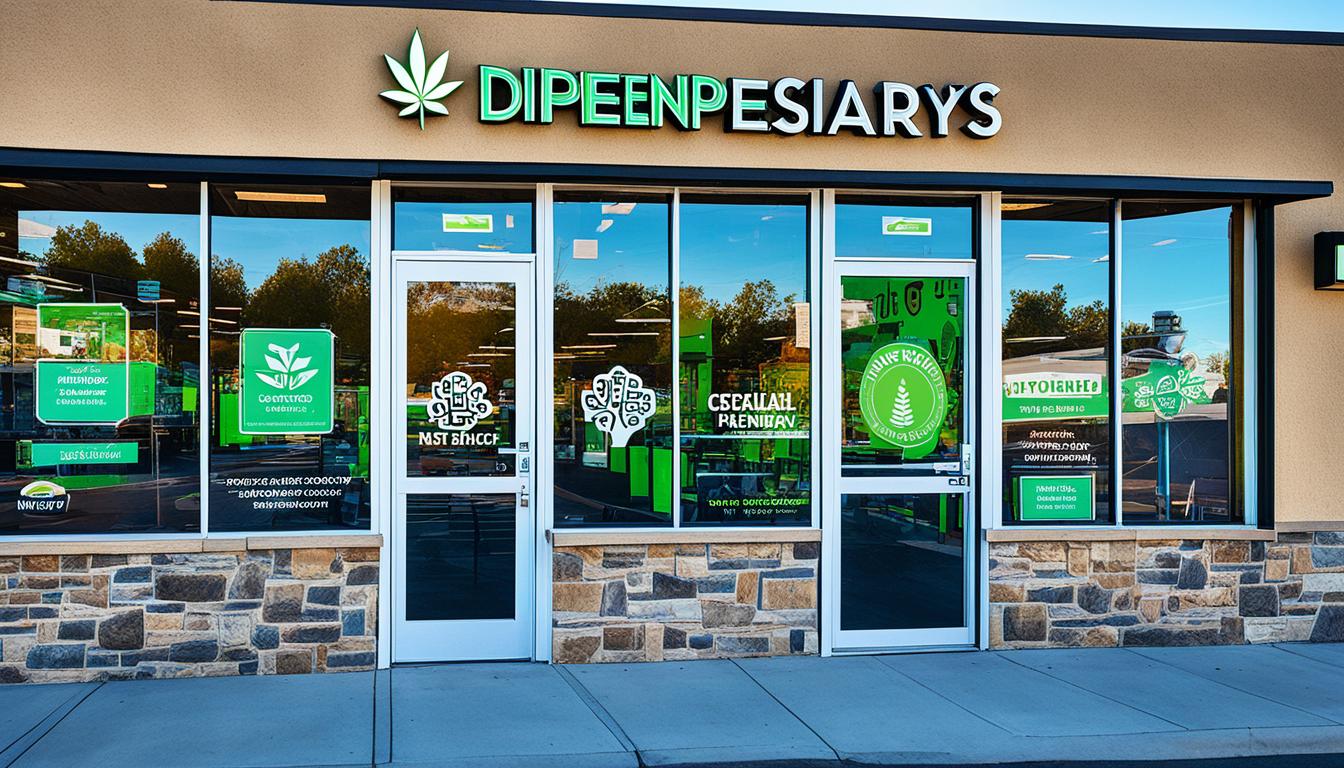Welcome to our in-depth analysis of Kraft Foods’ marketing strategy for 2024. In this case study, we will explore how this global food and beverage company has positioned itself in the market through strategic marketing initiatives, effective branding, and digital marketing efforts. By examining their approach, we can gain valuable insights into the challenges and opportunities that arise in the fast-paced food industry.
As a leader in the food and beverage industry, Kraft Foods recognizes the importance of understanding their target market and tailoring their marketing efforts to meet evolving consumer needs. Through market analysis and consumer research, the company has developed a strategy that focuses on engaging customers through various channels and platforms, both online and offline.
- Kraft Foods is utilizing strategic marketing initiatives to target and engage their customer base.
- The company’s branding efforts emphasize providing useful information and appealing to different customer needs and lifestyles.
- Kraft Foods employs aggressive promotional strategies, including circulars, radio and print advertisements, and content marketing on their website.
- Direct marketing and social media platforms are key components of Kraft Foods’ marketing efforts.
- The company incorporates corporate social responsibility initiatives to promote a healthy lifestyle and engage with the community.
Leveraging Online Presence for Customer Engagement
Kraft Foods recognizes the immense potential of online marketing and social media platforms in engaging consumers and driving brand loyalty. By strategically leveraging its online presence, the company effectively connects with its target audience, particularly young adults, mothers, and partygoers, and aligns their needs with relevant occasions such as holidays, entertainment, and the growing desire for healthy lifestyles.
Central to Kraft Foods’ online marketing strategy is its website, which serves as a powerful tool for customer engagement. The website not only showcases the qualities and values delivered through its brands but also provides customers with valuable information, including nutrition facts and a multitude of recipes.
By offering a recipe-focused approach, Kraft Foods taps into consumers’ interest in exploring new culinary experiences while promoting healthy eating habits. The wide variety of recipes caters to diverse dietary preferences and restrictions, allowing the company to establish itself as a go-to resource for consumers seeking delicious and nutritious meal ideas.
Moreover, Kraft Foods’ website creates an interactive environment that encourages active engagement with the brand. Visitors can leave comments, share their own recipes or adaptations, and engage in discussions about their favorite Kraft Food products. This user-generated content not only fosters a sense of community but also acts as a powerful word-of-mouth marketing tool, further enhancing consumer engagement.
In addition to its website, Kraft Foods has strategically embraced various social media platforms to reach and engage with its target audience on a deeper level. By creating compelling and shareable content, Kraft Foods maintains a strong brand presence and fosters ongoing conversations about its products. Through social media, the company can interact directly with consumers, responding to their inquiries, addressing their concerns, and even conducting contests or giveaways to further incentivize engagement.
With the rise of online influencers and content creators, Kraft Foods also collaborates with social media personalities to amplify brand reach and generate authentic user-generated content. By partnering with these influencers, the company taps into their established audiences and leverages their influence to promote its products in a genuine and engaging manner.
The effectiveness of Kraft Foods’ online marketing strategy lies in its ability to understand and cater to the evolving needs and preferences of its target audience. By positioning itself as more than just a food supplier, but as a trusted resource for delicious and healthy meals, Kraft Foods establishes a strong online presence that cultivates customer engagement and loyalty.
By continually adapting and optimizing its online marketing efforts, Kraft Foods ensures that it remains at the forefront of consumer engagement in the digital landscape, solidifying its position as a leading player in the food industry.
Aggressive Promotional Strategies for Branding
Kraft Foods has developed and implemented a range of aggressive promotional strategies to effectively market its products and build a strong brand presence. These strategies encompass various channels, including direct marketing, social media marketing, and content marketing.
Product Marketing
One of the key aspects of Kraft Foods’ promotional strategies is product marketing. The company employs a diverse range of tactics to create awareness and generate interest in its products. This includes distributing circulars with promotional offers and discounts, conducting national radio and print advertisements to reach a wide audience, and leveraging content marketing on their website.
Brand Associations
Kraft Foods understands the importance of fostering positive brand associations. The company utilizes various techniques to create a strong connection between its brand and the target audience. A notable strategy is the integration of its products into recipes on their website. By providing customers with recipe ideas that incorporate their products, Kraft Foods helps build a positive association between their brand and enjoyable and delicious meals.
Direct Marketing
In addition to traditional advertising methods, Kraft Foods utilizes direct marketing strategies to reach its customers. This includes personalized emails, direct mail campaigns, and mobile marketing initiatives. By directly engaging with customers, the company can deliver tailored messages and offers, enhancing the impact of their promotional efforts.
Social Media Marketing
Social media marketing plays a crucial role in Kraft Foods’ promotional strategies. The company leverages popular social media platforms such as Facebook, Instagram, and Twitter to connect with its target audience and promote its products. Through engaging content, influencer collaborations, and targeted advertising, Kraft Foods effectively reaches and engages its customers on these platforms.
Overall, Kraft Foods’ aggressive promotional strategies encompass a holistic approach to branding and product marketing. By combining direct marketing, social media marketing, and content marketing, the company optimizes the consumer experience across multiple touchpoints and ensures its brand remains at the forefront of consumers’ minds.
Implementing Corporate Social Responsibility
Kraft Foods is committed to implementing corporate social responsibility initiatives that promote a healthy lifestyle, community involvement, conservation, and food safety. Through these initiatives, the company aims to make a positive impact on society while establishing itself as a responsible and ethical brand.
Healthy Lifestyle
As part of its commitment to a healthy lifestyle, Kraft Foods focuses on providing nutritious food choices to consumers. The company encourages the consumption of balanced meals by offering products that meet specific dietary needs, such as reduced-sodium or gluten-free options. By promoting healthy eating habits, Kraft Foods supports individuals in leading healthier lives.
Community Involvement
Kraft Foods actively engages with the community through various initiatives. The company collaborates with local organizations, food banks, and shelters to combat hunger in North America. By donating food products and partnering with charitable organizations, Kraft Foods helps address food insecurity and supports those in need.
Conservation
With a focus on resource conservation, Kraft Foods strives to minimize its environmental impact. The company implements sustainable practices to reduce waste generation and water consumption in its operations. By investing in innovative solutions and technologies, Kraft Foods aims to protect and conserve natural resources, including people, land, water, and air.
Food Safety
Ensuring food safety and quality is a top priority for Kraft Foods. The company adheres to strict quality control measures throughout its supply chain, from sourcing ingredients to production and distribution. By implementing robust food safety standards, Kraft Foods guarantees that consumers can enjoy their products with confidence, knowing that they meet the highest quality and safety standards.
Incorporating these corporate social responsibility initiatives, Kraft Foods demonstrates its commitment to fostering a healthy lifestyle, engaging with the community, conserving resources, and ensuring food safety. By aligning its values with consumer expectations, Kraft Foods strengthens its reputation as a responsible and ethical brand in the food industry.
Expanding International Market Presence
In the era of globalization, Kraft Foods has a significant opportunity to expand its market presence and tap into the vast potential of emerging markets such as China and India. By strategically targeting these countries, the company can capitalize on the growing consumer base and increasing demand for quality food products.
One effective strategy to penetrate these international markets is to implement discounts and cash-back programs. These incentives can attract price-conscious consumers and encourage them to choose Kraft Foods over other competitors. Furthermore, such initiatives demonstrate the company’s commitment to providing value for money, further enhancing its brand image.
To ensure long-term success in these markets, Kraft Foods should focus on utilizing quality work processes. This includes maintaining strict quality control measures throughout the supply chain, from sourcing raw materials to manufacturing and distribution. By consistently delivering high-quality products, the company can build trust and loyalty among international consumers.
To encourage repeat purchases and build customer loyalty, Kraft Foods can also provide incentives such as rewards programs and exclusive offers for recurring customers. By offering personalized experiences and benefits, the company can foster long-term relationships with its international customer base.
Benefits of International Expansion
Expanding into emerging markets presents several benefits for Kraft Foods. First and foremost, it allows the company to tap into a larger consumer base, unlocking new revenue streams and driving growth. By diversifying its geographical presence, Kraft Foods also reduces its dependence on specific regions, mitigating risks associated with economic fluctuations.
Moreover, international expansion provides valuable insights into different consumer preferences and market trends. By understanding the unique demands and preferences of consumers in emerging markets, Kraft Foods can tailor its products and marketing strategies accordingly, gaining a competitive edge.
Lastly, expanding internationally also enhances the company’s overall brand reputation as a global player. By venturing into new markets and successfully establishing a presence, Kraft Foods solidifies its position as an international leader in the food industry.
| Benefits of Expanding into Emerging Markets | Challenges of Expanding into Emerging Markets |
|---|---|
| Access to a larger consumer base | Cultural and language barriers |
| Diversification of revenue streams | Legal and regulatory complexities |
| Insights into different consumer preferences | Adapting to local tastes and preferences |
| Enhancement of brand reputation | Logistical and supply chain challenges |
Content Marketing as a Key Strategy
Content marketing plays a pivotal role in Kraft Foods’ marketing strategy. By focusing on providing valuable and engaging content, the company enhances its brand presence and fosters stronger connections with customers. A recipe-focused approach is at the core of this strategy, allowing Kraft Foods to showcase its products in a practical and relatable context. Through the use of user-generated content, the brand encourages customers to actively participate and contribute to the culinary community.
At the heart of Kraft Foods’ content marketing strategy is their website, which serves as a hub for recipe sharing and culinary inspiration. A staggering two-thirds of the recipes featured on the website are contributed by users, while the remaining one-third is created by the brand’s own chefs. This recipe-focused approach not only provides a diverse range of options for customers but also promotes a sense of authenticity and trust in the brand’s products.
Similar successful content marketing approaches can be seen in leading brands like Whole Foods. These brands understand the power of tapping into their customers’ passion for cooking and sharing experiences. By posting recipes on social media platforms and encouraging users to share their own culinary journeys, brands like Whole Foods and Kraft Foods foster a sense of community and create a space for users to connect and engage with the brand.
Through a user-generated content strategy, Kraft Foods can build a strong community around its brand, driving customer engagement and loyalty. By allowing customers to contribute their own recipes and share their experiences, the brand harnesses the power of authentic storytelling and word-of-mouth marketing. User-generated content not only extends the reach and impact of Kraft Foods’ marketing efforts but also strengthens the bond between the brand and its customers.
The Power of User-Generated Content
User-generated content serves as a powerful driver of engagement and brand advocacy. When customers see their own creations featured on a brand’s website or social media platforms, they feel a sense of pride and ownership. This connection motivates them to further engage with the brand and share their experiences with others.
Moreover, user-generated content is highly influential in the decision-making process of potential customers. When they see real people sharing positive experiences and showcasing the brand’s products in action, it creates a level of trust and authenticity that traditional advertising struggles to achieve.
Kraft Foods understands the immense value of user-generated content in today’s digital landscape. By leveraging this content to its advantage, the brand can tap into the power of social proof and build a loyal community of brand advocates.
Recipe Contribution Breakdown
| Type of Recipe | Contributors |
|---|---|
| Recipes by Kraft Foods’ chefs | 1/3 |
| User-generated recipes | 2/3 |
Embracing New Technologies for Customer Interaction
Kraft Foods has always been at the forefront of adopting new technologies to enhance customer interaction. With the establishment of its website in 1992 and the launch of its YouTube channel in 2005, the company made a conscious decision to leverage the digital space and connect with its customers in new and innovative ways. However, their commitment to technology adoption does not end there. Kraft Foods has also embraced social media networks like Pinterest to engage with its audience and share recipes that resonate with their tastes and preferences. By actively participating in these platforms, Kraft Foods ensures a robust content marketing strategy while increasing customer engagement.
One of the key advantages of embracing social media networks is the ability to gather user input and facilitate interaction between the company and its customers. Kraft Foods actively encourages its customers to share their feedback, ideas, and experiences, which in turn helps the company gauge consumer sentiment and tailor their offerings accordingly. This user input allows Kraft Foods to stay responsive to the evolving needs and demands of its customers. By leveraging these insights, Kraft Foods can continuously refine its marketing strategies and product portfolio to better align with consumer preferences.
Staying updated with the latest technologies and consumer trends is crucial for any brand’s success in the digital age. Kraft Foods understands this, and their commitment to adopting new technologies ensures that they can remain ahead of the curve. By embracing innovative solutions and keeping a finger on the pulse of technology trends, Kraft Foods can better connect with its target audience and adapt to changing consumer preferences.
Benefits of Social Media Networks
When it comes to customer interaction, social media networks have revolutionized the way brands engage with their audience. By leveraging platforms like Facebook, Instagram, and Twitter, Kraft Foods can reach a wider audience, build brand loyalty, and foster meaningful connections with its customers. Social media allows for real-time communication and feedback, enabling Kraft Foods to address customer queries, concerns, and even provide personalized recommendations.
Moreover, social media networks provide an opportunity for Kraft Foods to showcase its products and services in a visually engaging and interactive manner. By sharing compelling content such as recipes, cooking tips, and behind-the-scenes glimpses, Kraft Foods can captivate its audience and create a sense of excitement and anticipation. This not only helps in building brand awareness but also encourages user-generated content and word-of-mouth marketing.
Technology Adoption and Future Growth
As technology continues to advance at a rapid pace, it is crucial for brands like Kraft Foods to stay on top of the latest trends and innovations. By embracing new technologies, Kraft Foods sets the stage for future growth and expansion. From leveraging artificial intelligence (AI) for personalized recommendations to exploring virtual reality (VR) experiences, there are endless possibilities for Kraft Foods to enhance customer interaction and create memorable brand experiences.
In conclusion, Kraft Foods’ commitment to embracing new technologies for customer interaction has helped the company stay ahead in a rapidly evolving digital landscape. By actively participating in social media networks, encouraging user input, and staying updated with technology trends, Kraft Foods ensures a strong content marketing strategy and increases customer engagement. As technology continues to shape consumer behavior, Kraft Foods’ technology adoption will play a crucial role in shaping their future growth and success.
Environmental Sustainability in Dairy Industry
Kraft Foods is committed to revolutionizing the dairy industry by implementing sustainable practices and ethical sourcing in its cheese production. With a focus on reducing its environmental impact, the company has implemented innovative solutions that have led to a significant reduction in its carbon footprint.
One of the key initiatives undertaken by Kraft Foods is the implementation of a closed-loop system in its cheese production facilities. This system aims to reduce water consumption and waste generation, ensuring a more sustainable and efficient production process. By optimizing resource usage and minimizing waste, Kraft Foods sets an example for environmentally-friendly dairy production.
Furthermore, Kraft Foods also places a strong emphasis on ethical sourcing practices. The company sources its milk from sustainable and ethical dairy farms that prioritize the humane treatment of cows and adhere to environmental best practices. By partnering with responsible suppliers, Kraft Foods ensures that its products are not only of high quality but also produced in an environmentally and socially responsible manner.
Through these sustainable practices and ethical sourcing initiatives, Kraft Foods is driving positive change in the dairy industry. By reducing its carbon footprint, conserving resources, and promoting ethical farm practices, the company is setting a new standard for sustainable dairy production. It is through these endeavors that Kraft Foods reaffirms its commitment to environmental stewardship and creating a more sustainable future.
Innovative Solutions for Sustainability
Kraft Foods continuously seeks innovative solutions to further reduce its environmental impact and promote sustainable practices. The company invests in research and development to explore new technologies and processes that can further enhance its sustainability efforts.
For example, Kraft Foods is exploring the use of renewable energy sources such as solar and wind power to reduce its dependence on fossil fuels and minimize greenhouse gas emissions. By embracing clean energy alternatives, the company aims to further reduce its carbon footprint and contribute to a greener future.
Additionally, Kraft Foods is investing in packaging innovations to reduce waste and improve recyclability. The company is actively exploring sustainable packaging materials and designs that minimize environmental impact while ensuring the freshness and quality of its products.
By embracing these innovative solutions, Kraft Foods continues to drive sustainability within the dairy industry. Through its commitment to sustainable practices, ethical sourcing, and innovative solutions, Kraft Foods sets a precedent for other companies to follow and demonstrates its dedication to a more sustainable and environmentally-conscious future.
Conclusion
Kraft Foods’ marketing strategy for 2024 encompasses a multi-faceted approach that harnesses the power of digital platforms, aggressive promotional tactics, corporate social responsibility, international expansion, and content marketing. By leveraging its online presence, Kraft Foods engages customers by providing valuable information and recipes that cater to their diverse needs and lifestyles. This strategy positions the company as more than just a food supplier, but a trusted resource and partner.
In addition to its online initiatives, Kraft Foods invests in aggressive promotional strategies to create brand associations and increase awareness. Through circulars, radio and print ads, and content marketing, the company solidifies its presence in the market. Furthermore, Kraft Foods places a strong emphasis on direct marketing and social media platforms, effectively reaching customers across various touchpoints.
However, Kraft Foods doesn’t stop at marketing; it also embraces corporate social responsibility. By actively promoting a healthy lifestyle and engaging with the community, Kraft Foods demonstrates its commitment to sustainable practices and ethical sourcing. This resonates with consumers who are increasingly conscious of the environmental and social impact of the products they purchase, enhancing consumer perception and fostering brand loyalty.
As Kraft Foods expands into emerging markets and integrates innovative solutions, it solidifies its position as a global leader in the food industry. The company’s focus on content marketing and technology adoption allows for increased customer engagement and interaction, further strengthening its brand presence.








